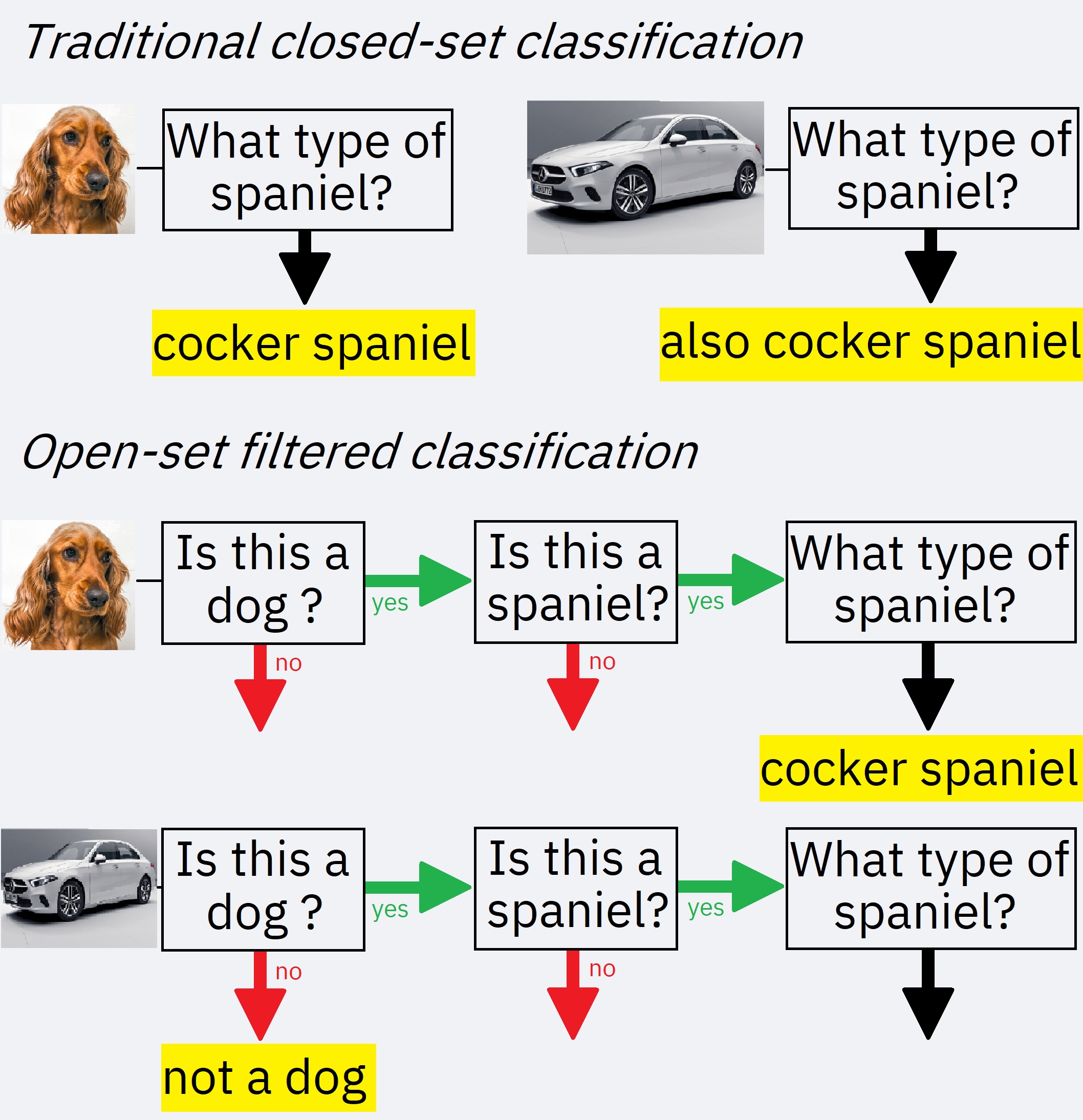
Open-set image classification
Open-set classification or out-of-distribution detection is critical for letting image classifiers work in the real world. I developed a simple solution with multiple ResNet models. Check out the UI and API in the code.

Getting started locally
See here for instructions on running the demo API and UI locally.
Introduction
A standard image classifier will assign a random image a category despite it not belonging to any specific category. These closed-set classifiers often do this with high confidence. An open-set classifier should detect images that do not belong in any of the classes. For example, a spaniels classifier should filter images of non-dogs and of non-spaniels; a car-model classifier should filter images of other makes or non-cars.
Previous simple approaches include:
- Including out-of-distribution images in the training set and labelling them as “Other”. Problem: this requires extensive coverage of potential “Other” images without imbalancing the datasets.
- Lump together all training images and pre-classify against a “outside world” image set. Problem: this also requires extensive coverage of potential “Other” images, as well as encountering the generality vs specificity dilemma: we need to filter out both specific non-spaniel dogs and random other objects such as cars.
This repo contains an example classifier which takes a spaniel/dog/Mercedes model classifier and adds open-set filtering capabilities. The classifier structure is as follows:
- Classify image according to original ImageNet and reject if not car/dog-like (based on ImageNet labels).
- Classify image according to 2-class “species” classifier trained on spaniels vs. non-spaniels/Mercedes vs. non-Mercedes, and reject if not spaniel/Mercedes.
- Classify image according to original closed-set classifier (spaniel-breeds/Mercedes models).
All the models are based on the ResNet architecture and use PyTorch for training and inference:
- Model 1: resnet18 with pretrained weights on ImageNet
- Model 2: resnet18 pretrained, and then retrained to 2-class dataset (correct make/species vs. incorrect) using transfer learning.
- Model 3: original pretrained and retrained resnet50 closed-set classifier.
This is the equivalent of first asking a friend what a car is, then asking a friend what Mercedes is, then what the individual models are.
Deployment
The open-set inference is developed as an API using FastAPI and uvicorn. This can be accessed using requests.post. You can test out different models on the Streamlit web-app. We deploy this repo as 2 separate apps on Heroku.
Training
Model training can be done in the training folder. To create a different open-set classifier, two models are needed:
- Your original closed-set classifier.
- Train another model with all the closed-set classes in one class, and images of different species but same thing in the other (e.g. non-Mercedes cars, or non-cow animals). To balance the sets, an augmentation script is provided augment_oversampling.ipynb. The augmentation performs a random rotation, a LR flipping, a random noise operation, Gaussian blur, a shear affine transformation and a contrast adjustment to produce 7 copies of the original image.
To set up another model,
- Put images in training folder/AWS S3 bucket.
- Run training notebook with correct training folder location.
- Move models over to
api/src/models - Add classifier to
api/src/classification.configincluding model locations and label names.
Datasets
Literature
- Problem statement and possible practical solutions here
- The literature also proposes methods which involve replacing the final SoftMax layer with a new layer e.g. here, or changing the loss function to maximise distance between known classes and the unknown e.g. here or here. These solutions are risky as they will probably impact the performance of the original closed-set classifier, which is undesirable.
Further work
- Tuning the mercedes-non-mercedes model to improve the acceptance of mercedes at the cost of rejecting non-mercedes (reducing type II errors at the cost of accepting more type I errors).
- Improving inference time of mercedes cars, as they must go through 3 models for a prediction.
